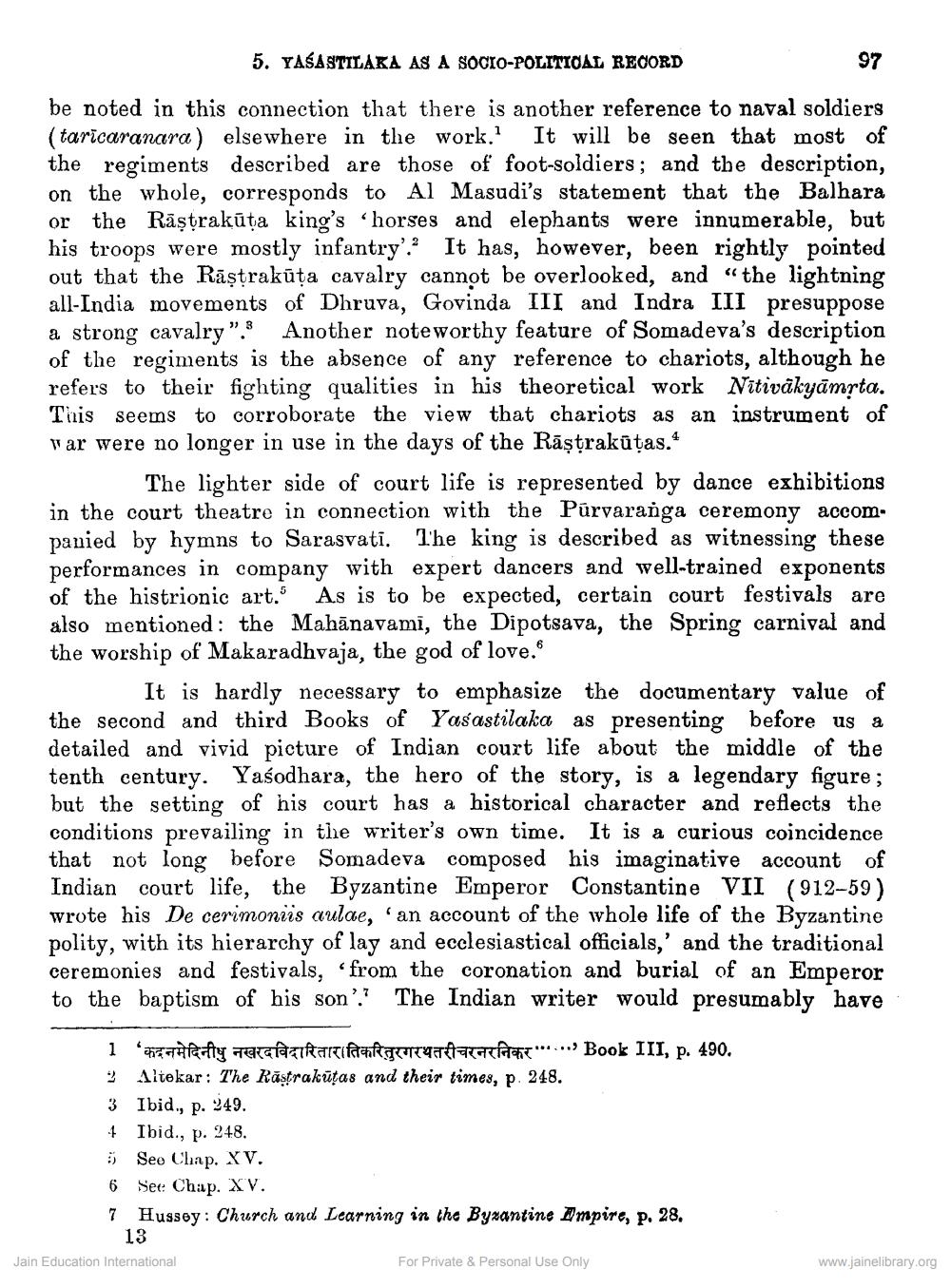________________
5. YASASTILAKA AS A SOCIO-POLITICAL RECORD
be noted in this connection that there is another reference to naval soldiers (taricaranara) elsewhere in the work.' It will be seen that most of the regiments described are those of foot-soldiers; and the description, on the whole, corresponds to Al Masudi's statement that the Balhara or the Raṣṭrakūta king's horses and elephants were innumerable, but his troops were mostly infantry'.2 It has, however, been rightly pointed out that the Raṣṭrakūṭa cavalry cannot be overlooked, and "the lightning all-India movements of Dhruva, Govinda III and Indra III presuppose a strong cavalry". Another noteworthy feature of Somadeva's description of the regiments is the absence of any reference to chariots, although he refers to their fighting qualities in his theoretical work Nitivākyāmṛta. This seems to corroborate the view that chariots as an instrument of war were no longer in use in the days of the Raṣṭrakūtas.*
The lighter side of court life is represented by dance exhibitions in the court theatre in connection with the Purvaranga ceremony accom. panied by hymns to Sarasvati. The king is described as witnessing these performances in company with expert dancers and well-trained exponents of the histrionic art.5 As is to be expected, certain court festivals are also mentioned: the Mahanavami, the Dipotsava, the Spring carnival and the worship of Makaradhvaja, the god of love."
97
It is hardly necessary to emphasize the documentary value of the second and third Books of Yasastilaka as presenting before us a detailed and vivid picture of Indian court life about the middle of the tenth century. Yasodhara, the hero of the story, is a legendary figure; but the setting of his court has a historical character and reflects the conditions prevailing in the writer's own time. It is a curious coincidence that not long before Somadeva composed his imaginative account of Indian court life, the Byzantine Emperor Constantine VII (912-59) wrote his De cerimoniis aulae, an account of the whole life of the Byzantine polity, with its hierarchy of lay and ecclesiastical officials,' and the traditional ceremonies and festivals, from the coronation and burial of an Emperor to the baptism of his son'." The Indian writer would presumably have
1 ' कदनमेदिनीषु नखरदविदारितार(तिकरितुरगरथ तरीचरनरनिकर ... Book III, p. 90.
2 Altekar: The Rastrakutas and their times, p. 248.
3 Ibid., p. 249.
4 Ibid., p. 248.
5
See Chap. XV.
6
See Chap. XV.
7
Hussey: Church and Learning in the Byzantine Empire, p. 28. 13
Jain Education International
For Private & Personal Use Only
www.jainelibrary.org




